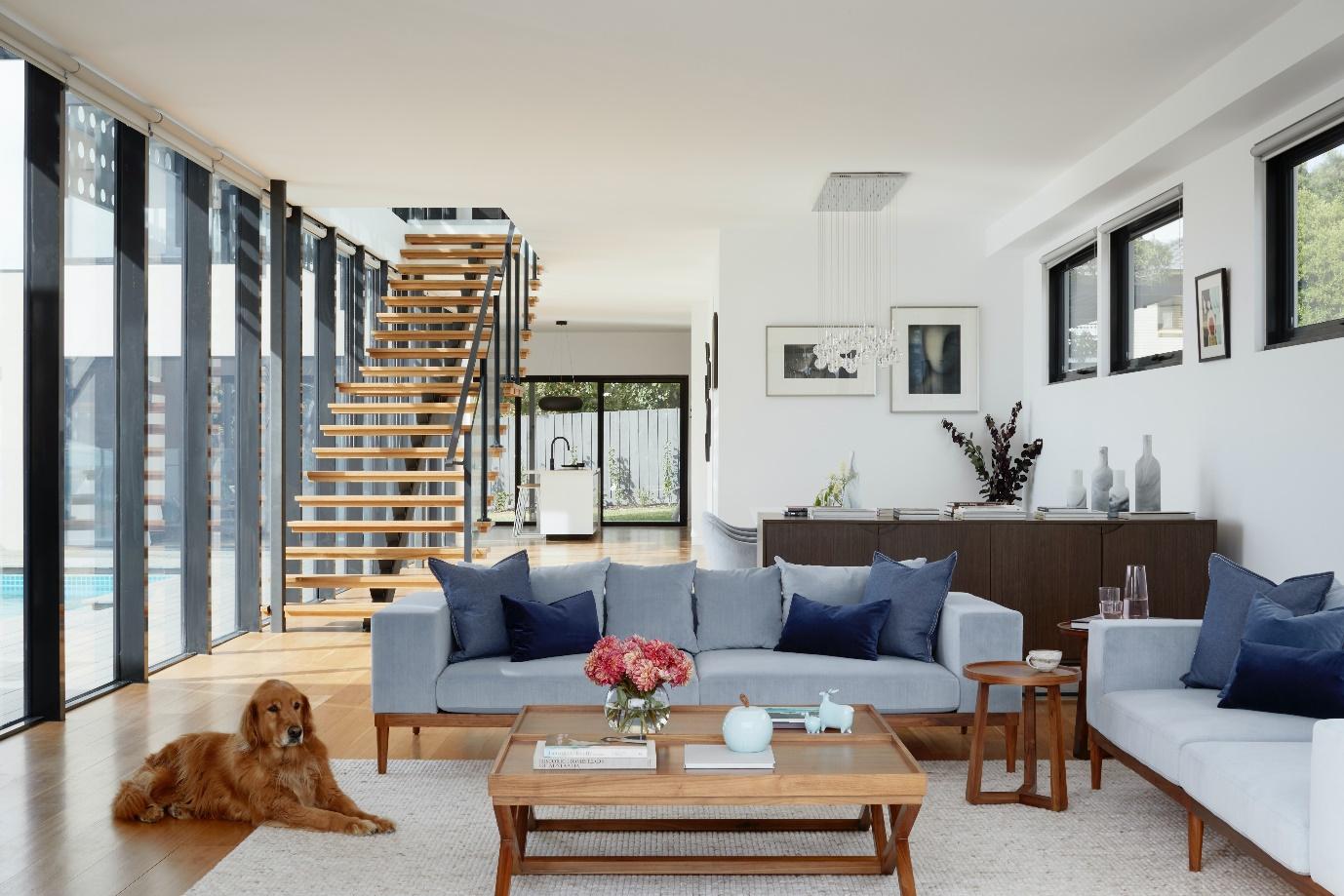Modern interior design has grown in popularity recently since it provides a new and contemporary way to modify living spaces. It emphasizes functionality and purpose in terms of principles. The modern house design avoids decoration and ensures every component has a sense.
Modern interior design styles fundamentally depart from conventional design trends. It places a strong emphasis on minimalism, smoothness, and simplicity. In addition, it embraces the maxim “less is more,” giving preference to clear, uncluttered areas above excessive decorations. Although the middle of the 20th century is frequently mentioned when discussing modern interiors, it has changed over time to accommodate many inspirations and styles.
This comprehensive guide explores contemporary modern house interior aesthetics and ideas for producing streamlined, practical, and fashionable rooms. It explores modern home design‘s essential components, traits, and methods, ranging from minimalism to industrial chic and Scandinavian design.
Modern minimalism
It is a design aesthetic emphasizing clarity, clean lines, and attention to critical components. It offered a relaxed and uncomplicated style and was born as a reaction to consumer culture excesses. Modern minimalism, based on the idea that “less is more,” aims to design aesthetically pleasing and valuable rooms that encourage tranquility and well-being.
A condensed and organized approach fundamentally characterizes modern minimalism. It eliminates excessive adornment and adopts a restrained color scheme that frequently uses neutral tones like white, gray, and beige. Due to the absence of distracting colors, the form and texture of the space are highlighted by the movement of light and shadow.
Eclectic Style and Contemporary Design
Two different but equally well-liked approaches to modern interior design are eclectic style and contemporary design. The eclectic style embraces the mixing and matching of diverse design influences and eras, in contrast to contemporary design, which emphasizes blending current components with classic influences.
Clean lines, minimalism, a neutral color scheme, and a few standard features are all contemporary design elements. Simplicity, usability, and establishing a classic aesthetic are prioritized. Contrarily, eclectic style is all about valuing uniqueness and expressing personal preferences.
Scandinavian Design
This style first appeared in the middle of the 20th century and is still heavily influential today. It is a minimalist and practical design aesthetic. Scandinavian design, which has its roots in the Nordic nations, has become well-known worldwide for its emphasis on functionality, natural materials, and craftsmanship.
Scandinavian design is fundamentally concerned with creating visually beautiful and beneficial rooms. Clean lines, minimalism, and understated elegance define the look. Neutral colors like white, gray, and beige are frequently used in color schemes because they convey lightness and openness.
Industrial Chic
It blends the raw, unfinished, and functional appearance of industrial buildings like factories and warehouses into interior design. It combines industrial features with softer textures and colors to produce a visually arresting and eclectic aesthetic. It is a distinctive blend of toughness and sophistication.
The appreciation of industrial materials and structural components is at the core of industrial chic design. Concrete flooring, open ceilings, and exposed brick walls are frequently significant features. These unfinished and unpolished components operate as a backdrop for the design, giving the room texture and personality.
Smart And Technology-Integrated Design
It is a cutting-edge method of contemporary interior design that smoothly integrates intelligent home technologies into living areas. This method maintains aesthetics and fosters a peaceful living atmosphere while providing ease, efficiency, and improved functionality.
Incorporating numerous smart home systems and devices is one of the major components of smart and technology-integrated design. These could include controls for home automation, security systems, audiovisual systems, and smart lighting and thermostats.
Sustainable Design
Resource efficiency and reduced environmental effect are the two main goals of sustainable design methods in interior architecture. Sustainable interior design aims to produce healthier, more ecologically friendly spaces by using sustainable materials, less energy, and considering the lifecycle of items.
A key component of sustainable design is the selection of environmentally friendly and sustainable materials for modern living room ideas. It entails the use of recycled or salvaged materials, timber that has been sourced ethically, paints and finishes with little or no volatile organic compound (VOC), and natural fabrics like organic cotton or hemp.
Choosing the Best
Interior designers, like Kanika Design, work closely with them to comprehend their client’s needs, interests, and lifestyles. Then, they conduct a space analysis and create a concept that adheres to the intended modern design. These designers have extensive knowledge of the various materials, colors, and textures available on the market.
As a leading interior designer in San Mateo County, Kanika Design assists clients in making material choices that align with contemporary design principles and meet sustainability standards.When choosing materials, interior designers consider durability, aesthetics, maintenance needs, and environmental friendliness.
They have an excellent sense of color schemes and lighting effects that support the modern look. Additionally, they help clients choose furnishings and accents that fit the contemporary design concept and enhance the room’s overall appearance.



































